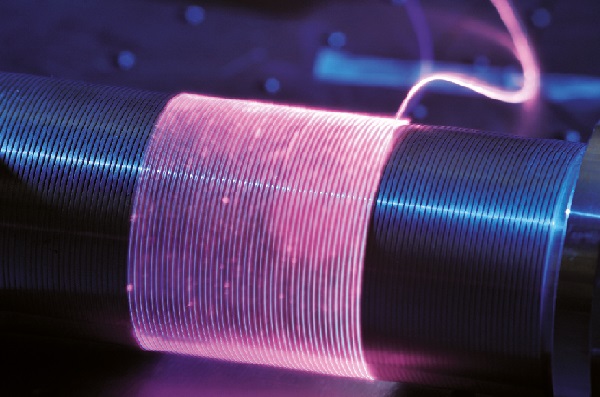A new class of fiber-based lasers, which use various molecular gases to produce light, has been introduced and formally patented. They are expected to help the research community with measuring distances to far-off targets, better identify the presence of particular gases in the atmosphere, and more efficiently send back images of the Earth from space.
Worth noting — these new lasers are considered more energy efficient and portable. They’re also able to produce light at difficult-to-reach wavelengths and can be scaled to higher-powered versions.

The new lasers were created by a team of physics researchers at Kansas State University, in partnership with contributors from the University of New Mexico. They are different from the larger, more bulky glass-tube lasers, which use mirrors to reflect the light. Specifically, they use a hollow fiber with a honeycomb structure to hold gas and guide the light. The actual optical fiber is filled with a molecular gas, like hydrogen cyanide or acetylene, which gets excited by another laser; when this happens it causes a molecule of the excited gas to spontaneously emit light. Other molecules react the same way, which results in laser light.
“By putting the gas in a hollow core, we can have really high intensities of light without having to put such high amounts of power into the laser,” said Kristan Corwin, an associate professor of physics at Kansas State University's College of Arts & Sciences, who worked on this project. “If you had a glass tube of that size and put light in it, the light would escape through the sides. It's actually the structure that makes it work.”
The way in which these lasers are constructed also allows for portability. Traditional lasers are extremely fragile, and a bit hard to move around. The fiber laser is much more durable, even though its thickness is approximately that of a human hair; so much so that it can wrap around itself for compact storage.
“The smallness is nice,” said Brian Washburn, who also worked on the project and is an associate professor of physics at Kansas State University's College of Arts & Sciences as well. “You can wrap up the coil like a string.”
What’s particularly noteworthy about this laser is its use of gas—this was actually a popular form of laser production in the past, before manufacturers moved on to solid-state materials.
“What we've done is use an old-school technology medium in a new-school package,” Washburn summarized.
Moving forward, the team plans to continue to study and improve upon the lasers using fibers provided by Fetah Benabid at Xlim in Limoges, France. Their research is being funded by the U.S. Air Force Office of Scientific Research and the U.S. Air Force Research Laboratory.
Advertisement
Learn more about Electronic Products Magazine





